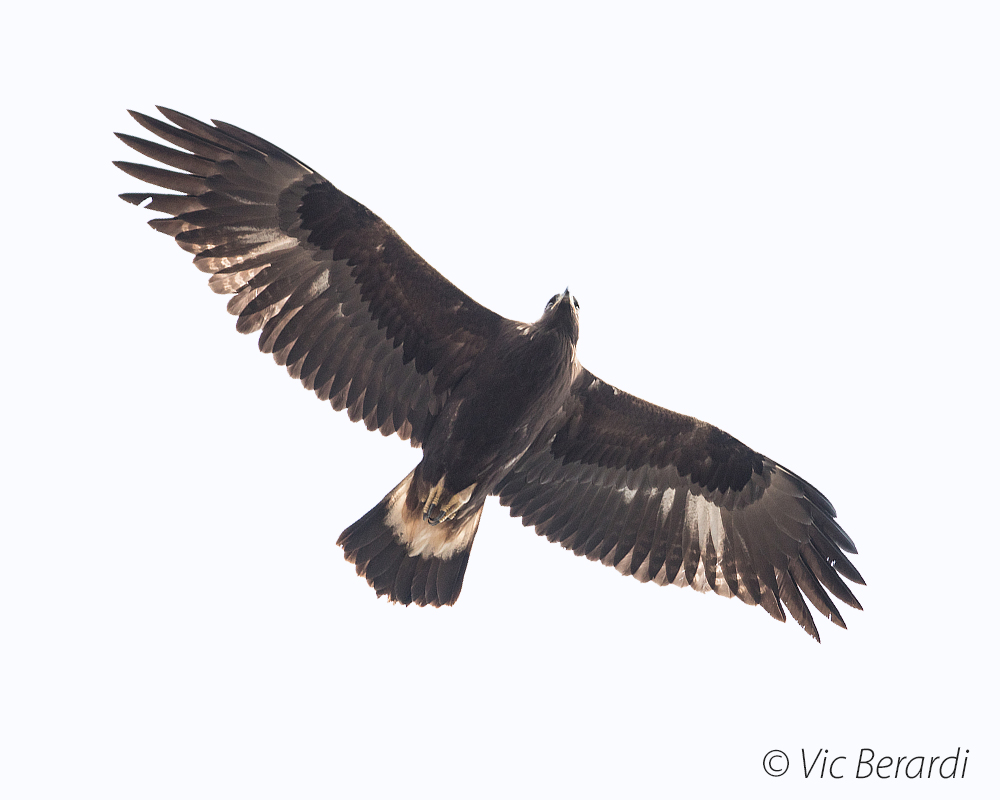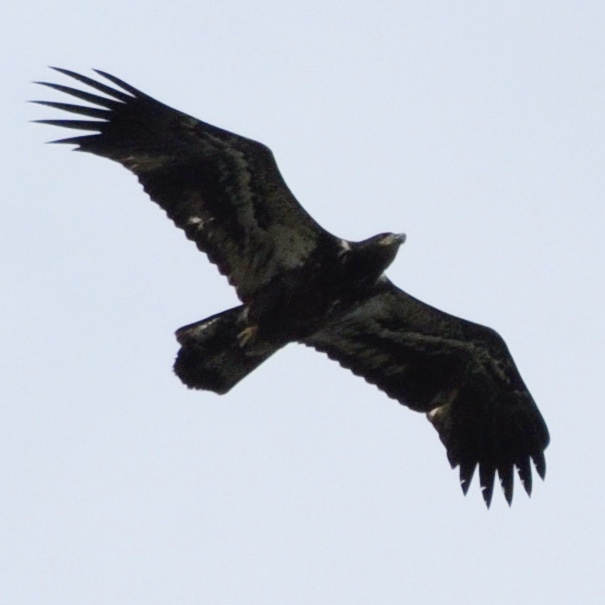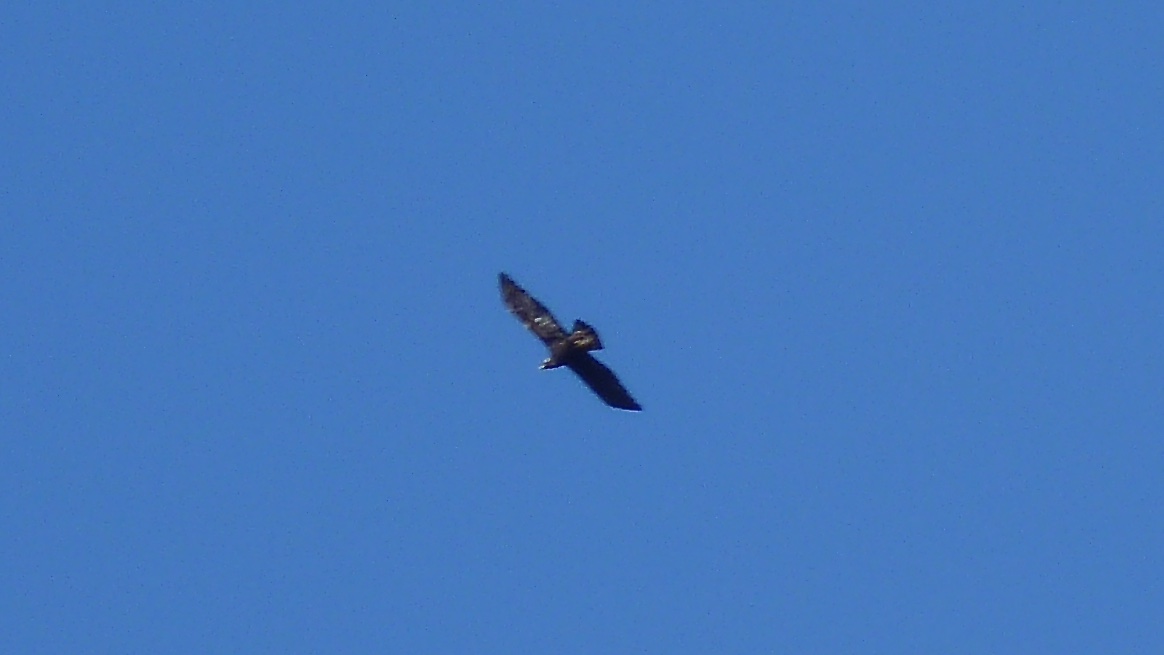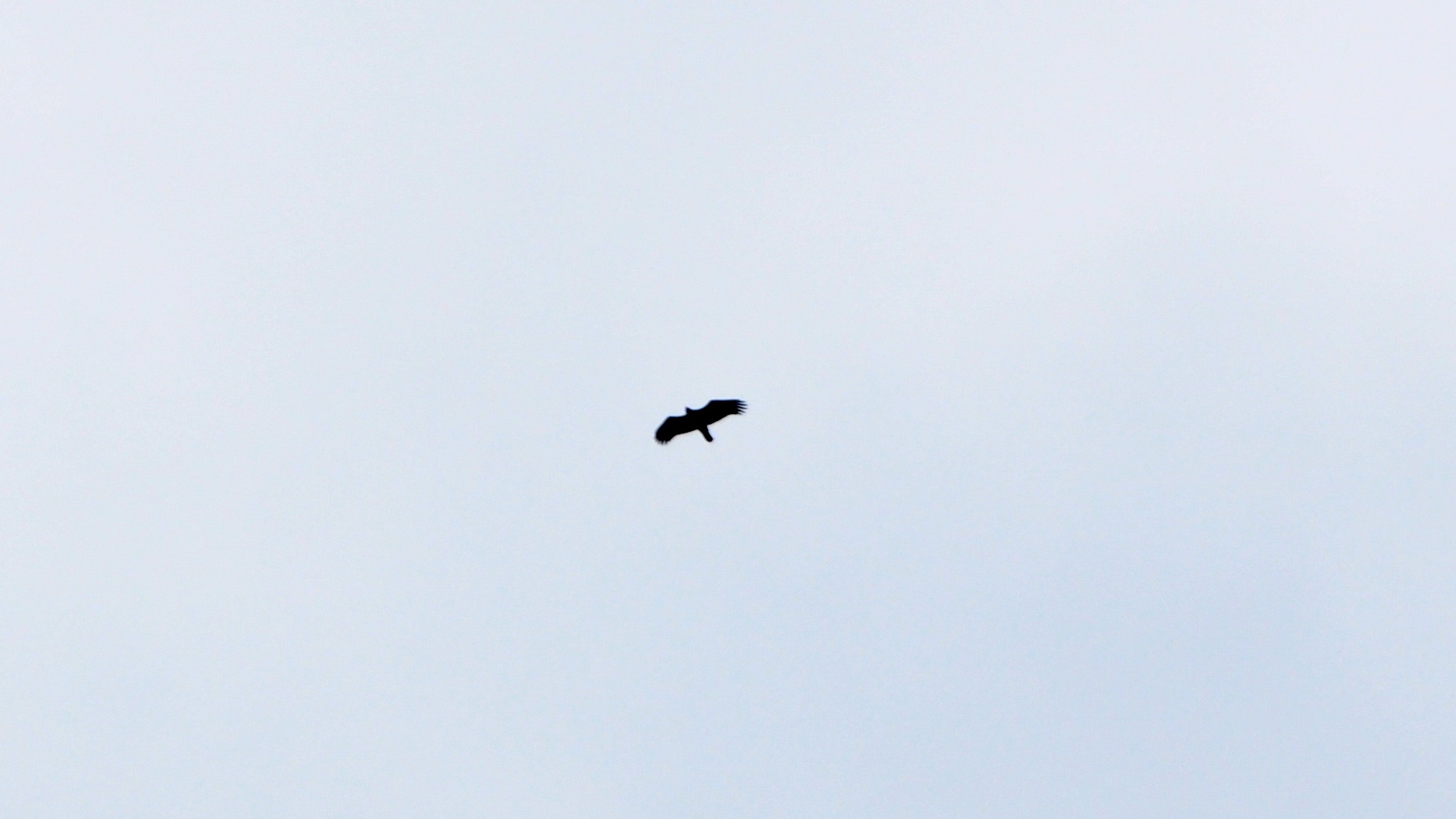
As November rolls in, many Illinois birders shift their focus to a shorter list of target species. The majority of migrants have left the state for the winter, but some are still moving in. November brings to mind the first big push of waterfowl, and the search for vagrants. At Illinois hawkwatch sites, November can hold some late-fall specialties that get many people bundled up to stare down a Northwest wind!
My favorite of those specialties is the Golden Eagle. At sites along the Lake Michigan shoreline, such as the Illinois Beach State Park Hawkwatch, and Fort Sheridan Hawkwatch, Golden Eagles are an uncommon, but regular migrant with seasonal averages being under five. At a more inland site like DuPage County’s Greene Valley Hawkwatch, Golden Eagles are still uncommon, but the seasonal average increases to seven. Although the averages are different, there is a common thread between both inland and shoreline sites, and that is that many of the Golden Eagles do not come in for close views! With Bald Eagles being a much more common migrant, it is important to learn how to differentiate the two species at a distance. Luckily, by using shape and flight style, the two can be separated even when plumage details are not useful for identification.
Shape
One difference between the two eagle species is the size of the head and length/shape of the tail. On a Bald Eagle, the head is large and bulbous, protruding far beyond the leading edge of the wings. At most angles, the bulky head of a Bald Eagle is obvious. Bald Eagles also have broad tails that are short relative to their size. At times, it can appear as if the head is only just shorter in length than the tail.

In comparison, Golden Eagles have much smaller heads. The head on a Golden Eagle is almost buteo-like and is not prominent, especially on distant birds. With Golden Eagles, the tail is longer and skinnier than that of a Bald Eagle. Be cautious with the tail, as both species can have a short-tailed impression when the tail is fully fanned during a soar.
Another difference is in wing shape. Bald Eagles have very broad wings. On the trailing edge, the wings look nearly the same in length from the body to the outer primaries. This gives the impression of an almost straight line from the body all the way to the outer primaries when they soar. Many hawkwatchers describe the shape as to two large planks sticking out from the body. At almost all angles, a Bald Eagle’s wings will look massive from body to wingtip.
On a Golden Eagle there’s more curve to the trailing edge. The secondaries on a Golden have a distinct bulge before reaching the shorter outer primaries (or hands), which is reminiscent of a buteo. Also, the shorter inner secondaries pinch in towards the body. This gives a Golden Eagle an “S” curve profile to the trailing edge of the wing. At certain angles, the wings can almost look paddle-like, something you will not see on a distant Bald Eagle. Overall, the impression of a Golden Eagle is slimmer than that of a Bald.
Flight

Bald Eagles tend to soar on flat wings. They make long, lazy circles, taking what seems like a decade to pass by once detected over the horizon! Bald Eagles tend to glide on drooped wings and overall look very bulky. In a glide, the large head and short tail are still obvious. Another thing to look for is how the eagle is flapping. With a Bald Eagle, the flaps are deep and strong. A key difference between the two species is how they set their wings after flapping. A Bald Eagle, when setting their wings to soar/glide, will go through a large upstroke and adjust back to their flat-winged position.
Golden Eagles soar with an obvious dihedral and glide on bowed wings or with a modified dihedral. They are also strong fliers, and only the toughest winds will allow for occasional unsteadiness as they pass by. This is why distant Turkey Vultures (small head, long tail and dihedral) can sometimes be confused for Golden Eagles. With a Golden, the flap is shallower and smoother than that of a Bald. A Golden Eagle will set their wings at the top the upstroke, looking like they’ve snapped their wings into place above the body in a dihedral.
Summary

Although close eagles allow for study of plumage differences, we often aren’t given that luxury. With practice, some distant eagles can be identified. In fact, many of the field marks mentioned become more obvious at a distance! This is especially true with the trailing edge of the Golden Eagle’s wings, and the large head of a Bald Eagle. If you find a distant eagle this November, don’t put your binoculars down or take your eyes off of the scope! Spend some time with it, make some mental notes about the eagle’s shape, and flight style.
I would also highly encourage anyone interested in learning more about raptor ID to visit an Illinois hawkwatch site. Gaining field experience alongside veteran hawkwatchers is the best way to improve raptor identification, especially with distant birds. So throw on your layers, everyone, and get out there!
